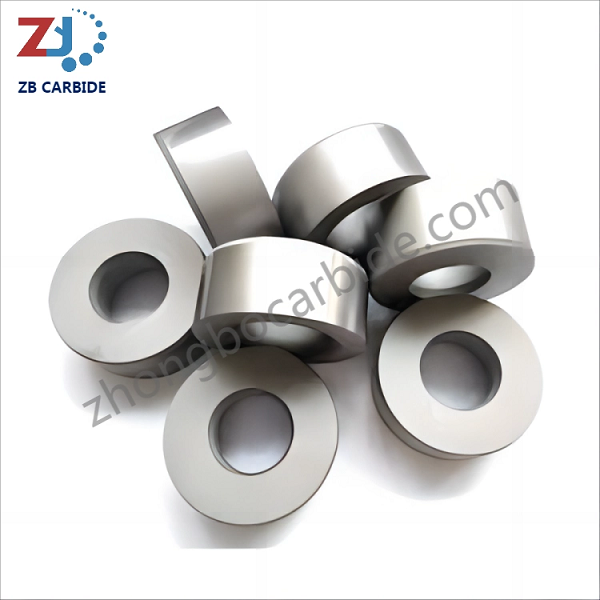In the realm of metalworking and manufacturing, precision and efficiency are paramount. Whether you're producing wire, rods, tubes, or other metal products, the quality of your tools can make all the difference in achieving optimal results. When it comes to wire drawing—a process used to reduce the diameter of metal wire while increasing its length—a key component in the operation is the carbide drawing bar. But with a plethora of options available on the market, how do you choose the appropriate carbide drawing bar for your specific application? In this comprehensive guide, we'll delve into the factors to consider when selecting a carbide drawing bar, exploring the various types, sizes, coatings, and configurations available to meet your unique needs and requirements.
Understanding Carbide Drawing Bars
Carbide drawing bars, also known as carbide drawing dies or carbide drawing inserts, are precision-engineered tools used in the wire drawing process. Made from tungsten carbide—a dense, durable, and wear-resistant material—carbide drawing bars are designed to withstand the extreme pressures and abrasion encountered during the wire drawing process. By providing a hard and smooth surface for the metal wire to pass through, carbide drawing bars help to reduce friction, control metal flow, and maintain dimensional accuracy, resulting in high-quality wire with consistent diameter and surface finish.
Factors to Consider When Choosing Carbide Drawing Bars
When selecting a carbide drawing bar for your application, several factors should be taken into consideration to ensure optimal performance and longevity:
●Material Compatibility: Different metals and alloys have varying properties and characteristics, which can affect their behavior during the wire drawing process. Choose a carbide drawing bar that is compatible with the material you are working with to ensure efficient drawing and minimize tool wear.
●Wire Diameter and Reduction Ratio: The diameter of the wire being drawn and the desired reduction ratio will influence the size and configuration of the carbide drawing bar required. Larger diameter wires and higher reduction ratios may necessitate larger and more robust drawing bars to withstand the increased forces involved.
●Surface Finish Requirements: The surface finish of the drawn wire is an important consideration, especially in applications where smoothness and aesthetics are critical. Select a carbide drawing bar with the appropriate surface finish to achieve the desired results, whether it be a polished, ground, or textured surface.
●Operating Conditions: Consider the operating conditions of your wire drawing process, including factors such as temperature, pressure, speed, and lubrication. Choose a carbide drawing bar that is capable of performing reliably under the specific conditions encountered in your application, whether it be high-speed drawing, dry drawing, or drawing in a corrosive environment.
●Tool Design and Configuration: Carbide drawing bars are available in various designs and configurations to accommodate different wire drawing setups and requirements. Whether you're using a single die or a multi-die setup, choose a carbide drawing bar that is compatible with your equipment and workflow, ensuring seamless integration and optimal performance.

Types of Carbide Drawing Bars
Carbide drawing bars come in a variety of types and configurations to suit different wire drawing applications:
Single-Step Drawing Bars: These drawing bars feature a single die opening and are typically used for simple wire drawing operations with minimal reduction in diameter.
●Multi-Step Drawing Bars: Multi-step drawing bars contain multiple die openings of varying diameters, allowing for gradual reduction in wire diameter over several steps. This configuration is ideal for achieving precise control over the drawing process and producing wires with uniform diameter and properties.
●Shaped Drawing Bars: Shaped drawing bars are designed with specialized die profiles or contours to produce wires with non-circular cross-sections, such as square, rectangular, or hexagonal shapes. These bars are used in applications where specific wire shapes are required for further processing or end-use applications.
●Coated Drawing Bars: Some carbide drawing bars are coated with wear-resistant materials such as titanium nitride (TiN), titanium carbide (TiC), or diamond-like carbon (DLC) to enhance their durability and performance in demanding applications. These coatings provide additional protection against abrasion, adhesion, and chemical corrosion, prolonging the life of the drawing bar and improving wire quality.
Maintenance and Care of Carbide Drawing Bars
Proper maintenance and care are essential to maximize the performance and longevity of carbide drawing bars:
●Regular Inspection: Routinely inspect carbide drawing bars for signs of wear, damage, or deformation, such as chipping, cracking, or surface irregularities. Replace worn or damaged drawing bars promptly to prevent quality issues and downtime.
●Cleaning and Lubrication: Clean carbide drawing bars regularly to remove metal buildup, debris, and lubricants that can impair performance and quality. Use appropriate cleaning solutions and lubricants to maintain cleanliness and lubrication during the drawing process.
●Sharpening and Resharpening: Carbide drawing bars can be sharpened or resharpened to restore their cutting edges and surface finish. Consult with a qualified tooling supplier or manufacturer to determine the best methods and practices for sharpening your drawing bars.
●Storage and Handling: Store carbide drawing bars in a clean, dry, and climate-controlled environment to prevent corrosion, oxidation, and contamination. Handle drawing bars with care to avoid dropping or mishandling, which can cause damage or deformation.
Conclusion
In conclusion, choosing the appropriate carbide drawing bar for your application requires careful consideration of factors such as material compatibility, wire diameter, surface finish requirements, operating conditions, and tool design. By selecting the right carbide drawing bar and implementing proper maintenance and care practices, you can ensure optimal performance, longevity, and quality in your wire drawing operations. Whether you're producing wires for automotive, aerospace, construction, or consumer goods applications, a well-chosen and well-maintained carbide drawing bar is essential for achieving superior results and staying ahead in today's competitive manufacturing landscape.


























